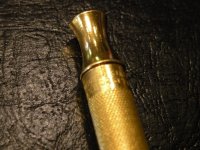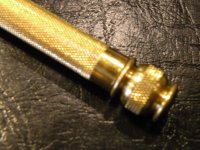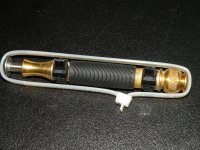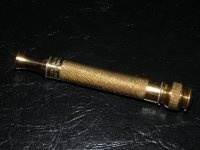- Thread starter
- #161
I would go to a hobby store and look for the thinnest brass, aluminum, etc tubing possible, that will fit into the handle, AND allow the inner tube to slide in. It would be doable."Useless shaver, post: 8986044, member: 46737"]Great thread, thank you OP!
I might have to use your wisdom...
Soldering is an option, but not what this thread is about. I can't help you there.






